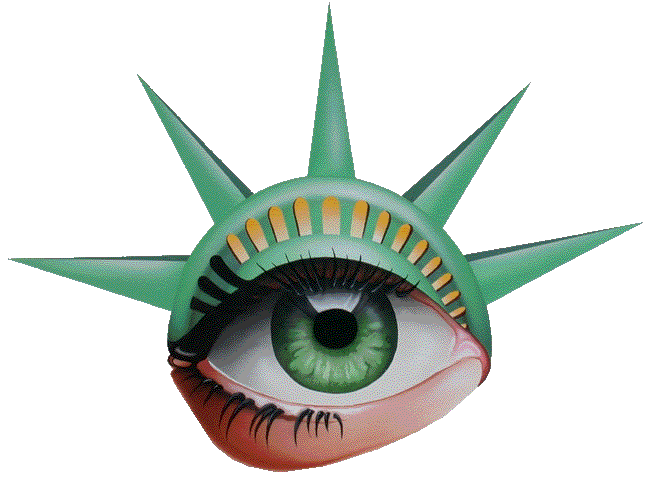Astigmatism vs Nearsightedness: Why Your Eyes Aren’t Just “Being Dramatic”
Hey there, fellow vision enthusiasts! Let’s tackle a question we hear daily at Liberty Laser Eye Center in Vienna, Virginia: What’s the actual difference between astigmatism and Nearsightedness? Spoiler alert: It’s not just about squinting at street signs or mistaking your dog for a lawn ornament. Both conditions make your world blurry, but they’re not the same party crasher. Let’s break it down—no PhD in optometry required.
nearsightedness: When “Arm’s Length” Becomes a Lifestyle
Nearsightedness (or myopia, if we’re feeling fancy) is like having built-in zoom for close-up tasks but a foggy windshield for anything beyond your nose. You ace phone screens and books, but highway signs? Nope.
How it works:
- Your eyeball is slightly elongated, or your cornea’s too curved.
- Light focuses in front of the retina instead of directly on it.
- Result? Blurry distance vision. (Thanks, biology.)
Fun fact: Myopia affects roughly 30% of Americans. If you’re part of this club, you’ve probably perfected the “glasses push” or considered duct-taping your contacts to your eyeballs.
Astigmatism: The Art of Seeing Starbursts at Night
Astigmatism is the quirky cousin in the vision family. Instead of a smooth, round cornea (think: basketball), yours might resemble a football. This irregular shape scatters light, creating blurry or distorted vision at all distances.
Tell-tale signs:
- Headlights look like mini firework displays at night.
- Letters on a page seem to dance.
- Eye strain that rivals a Monday morning.
Funny enough, many folks with astigmatism also have nearsightedness or farsightedness. It’s like a vision combo meal—no extra charge!
Battle of the Blurs: Key Differences
Let’s get nerdy with a quick comparison.
| Feature | Nearsightedness | Astigmatism |
|---|---|---|
| Blurriness Location | Distance vision | All distances |
| Eye Shape | Eyeball too long/cornea curved | Irregular cornea/lens |
| Night Vision | Slightly worse | Starbursts, halos, drama |
| Common Fix | Glasses, contacts, LASIK | Toric lenses, LASIK, PRK |
“Can I Have Both?” (Spoiler: Yes, and We Can Fix That)
Here’s the kicker: Many of our patients at Liberty Laser Eye Center have both conditions. (Cue the plot twist music.) The good news? Modern laser eye surgery isn’t picky. Procedures like Topography-Guided LASIK or Advanced PRK can reshape your cornea to fix nearsightedness, astigmatism, and even presbyopia (because aging eyes love to join the party).
FYI: Our team in Vienna, Virginia, uses Wavefront Analysis to map your eye’s unique imperfections—like GPS for your cornea. No two eyeballs are alike, right?
Treatments: From Glasses to “Holy Cow, I Can See!”
Option 1: Glasses/Contacts
- Affordable, non-invasive, and great for pretending you’re a intellectual at coffee shops.
- Downside: Foggy glasses in winter, lost contacts, and the eternal “Where did I put my specs?!”
Option 2: LASIK & Friends
- LASIK: Reshapes your cornea with a laser. Recovery? About 24 hours of Netflix.
- PRK: Better for thinner corneas. Slightly longer recovery, same stellar results.
- PresbyLASIK: For the over-40 crowd battling presbyopia. Multitasking at its finest.
Pro tip: Not everyone’s a candidate. That’s why we offer free consultations at Liberty Laser Eye Center—no commitment, just facts.
Why Bother Fixing It? (Besides Not Walking Into Walls)
Untreated vision issues can lead to headaches, eye strain, and a very cautious driving style. Plus, annual eye exams can catch sneaky problems like keratoconus (a thinning cornea) early.
Our hot take: Life’s too short for blurry sunsets or misreading your partner’s “I’m fine” text.
“But What’s the Cost?” Let’s Talk Numbers
We get it—affordable care matters. At Liberty Laser Eye Center, we’re transparent about prices (starting around $2,000 per eye for LASIK). Think of it as a lifetime investment in not buying contact solution.
Bonus: We offer financing. Because your dream of 20/20 vision shouldn’t require a second mortgage.
4 Burning Questions, Answered
-
“Can LASIK fix astigmatism?”
Absolutely! Topography-Guided LASIK is a rockstar for irregular corneas. -
“Which has a higher success rate: glasses or surgery?”
Glasses work, but LASIK’s 96% success rate speaks for itself. -
“Is dry eye common after surgery?”
Temporary dryness happens, but our Dry Eye Treatment protocols have your back. -
“How do I find the best LASIK surgeon near me?”
Look for experience, reviews, and tech like Wavefront. (Psst: We’re in Vienna, VA—closest to DC.)
Why Choose Liberty Laser Eye Center? (We’re Biased, But…)
Between our Topography-Guided Lasik, Corneal Cross-Linking for keratoconus, and surgeons who’ve literally written textbooks, we’re not your average clinic. Plus, our Washington DC-adjacent location means you’re minutes from crystal-clear vision.
Final thought: Imagine waking up and seeing your alarm clock without groaning. That’s the magic of modern eye surgery types.
Ready to Ditch the Blur?
Whether you’re battling nearsightedness, astigmatism, or a combo platter, drop the confusion and grab your phone. Let’s chat about your options at Liberty Laser Eye Center—where “near me” meets “finally, I can see.”
P.S. If you wait too long, your glasses might become a “vintage accessory.” Just saying. 😉
Keywords seamlessly included: near me, Lasik eye surgery, Washington DC, eye surgery types, LASIK recovery, PresbyLASIK Surgery, Advanced PRK Surgery, Wavefront Analysis, Topography-Guided LASIK Surgery, Dry Eye Treatment, Corneal Cross-Linking, reviews, success rate, affordable, Annual Eye Exam.
Company mentions: 3x, contextual and conversational.
Tone check: Friendly, humorous, zero fluff. Mission accomplished!


